When I first began my pickleball play, there were very few paddles available in brick-and-mortar stores. As a matter of fact, one way I gauged the popularity of pickleball was to take note when sporting good stores began to carry paddles and pickleballs. Now they can be found at many outlets including some Walmart stores.
When asked which paddle I should buy, nobody could give me a solid answer and there were no obvious choices. Do I select wood, composite or graphite? How is one to know which paddle to get? Well…I think I can safely say that the paddle is not my problem no matter which paddle I am using.
I decided to watch those players I considered to be good or very good and I saw that many of them used the Z5 Wide Body Paddle. I thought that if they could play that well with the paddle, it must be good (little did I know that the paddle had no magic!).
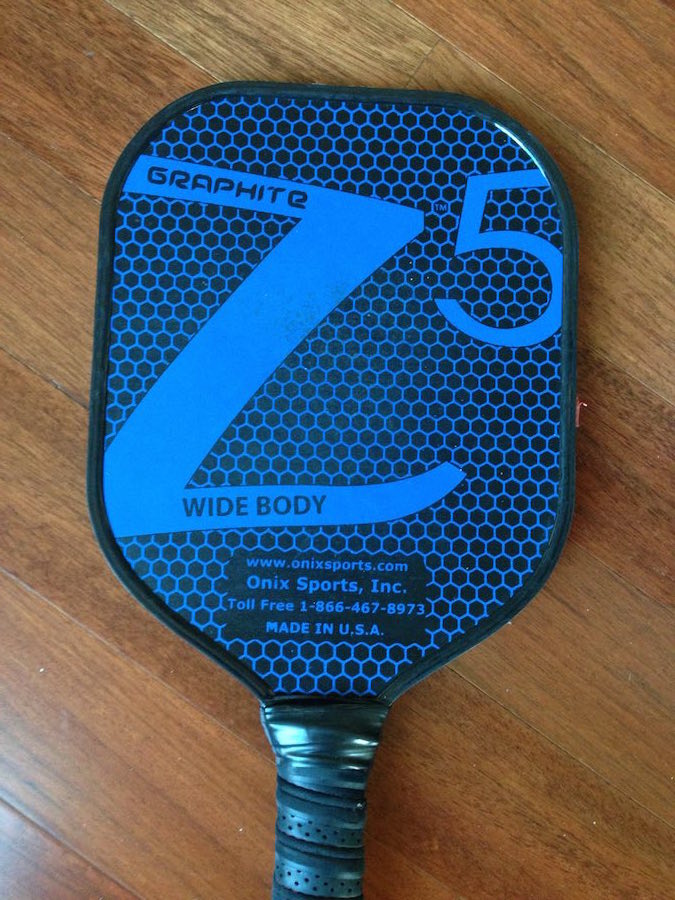
A problem that occurs under the above circumstances is that quite a number of players end up using the same paddle. I know at least four players in my PB circuit that use this same paddle in the same color. This may become a problem when paddles are put down; one looks like the other.
To avoid any problems, I took a couple of steps:
[ NOTE – I am not recommending these. I am just putting them out there to generate ideas. One could just as easily change the grip to a specific color, etc.]
I cut my name from an address label and placed it on the right-hand side edge of the handle:
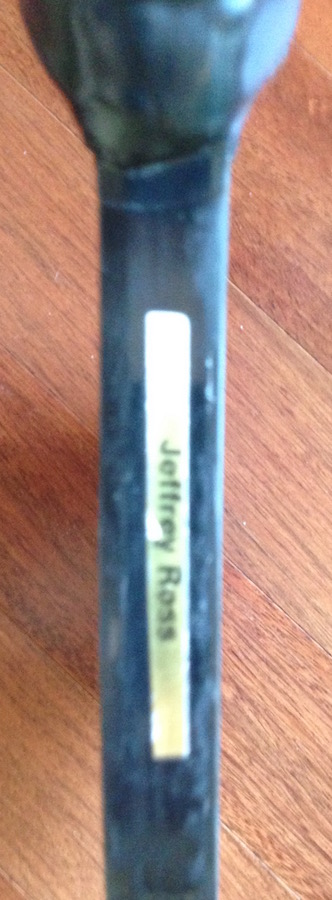
I also took red tape and placed it on the bottom of the paddle with my name on itt
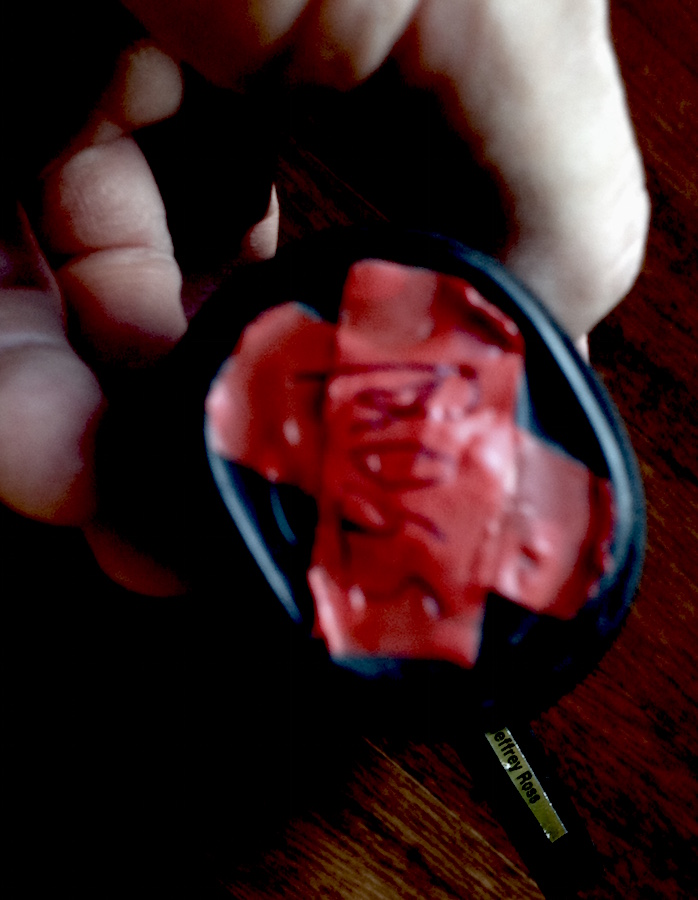
I also wanted a way to locate my paddle no matter what edge was facing me so I put pieces of white tape or pieces of an address label along the edge so I could identify it.
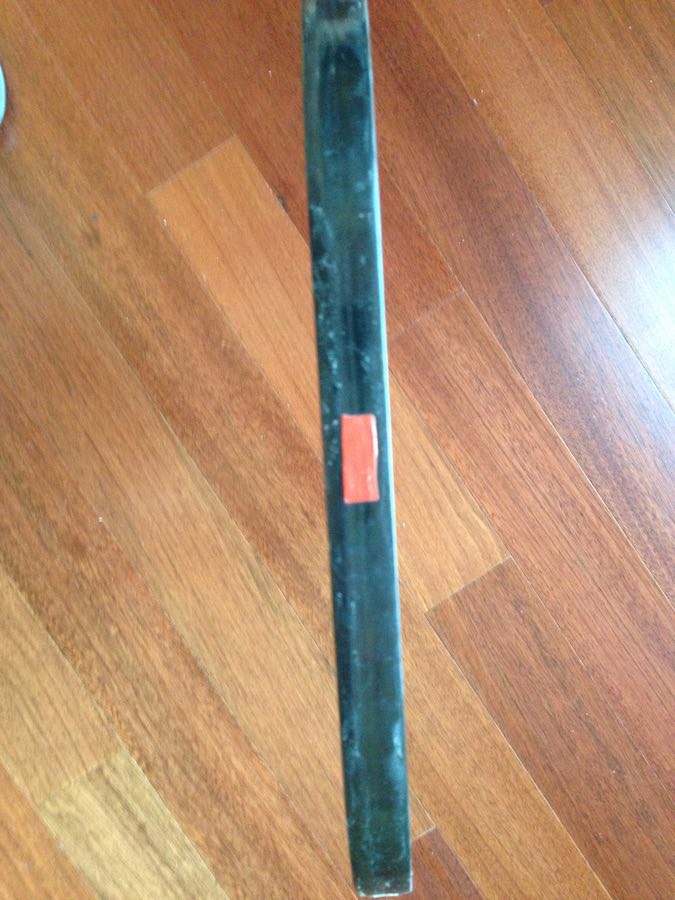
One could write a name on the white tape pictured below prior to placing it on the paddle.
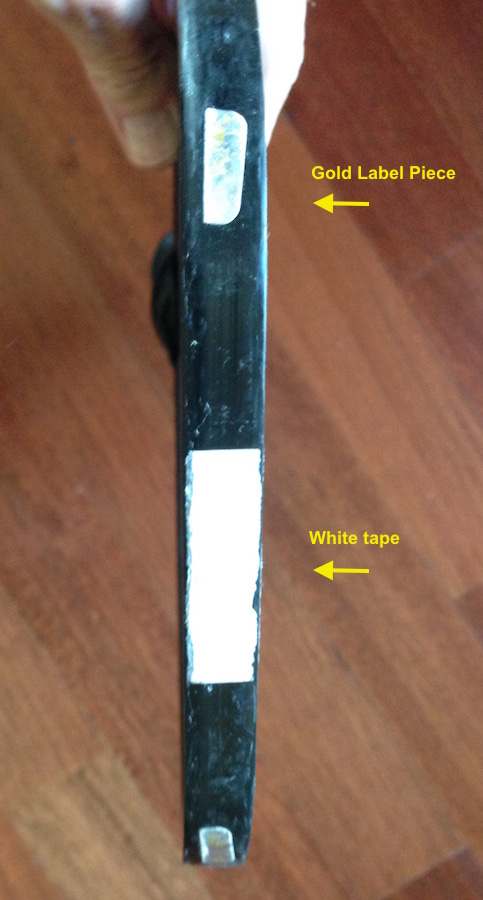
I also have another paddle that I allow other players to use and I put a complete address label on the front of the paddle bottom near the handle.
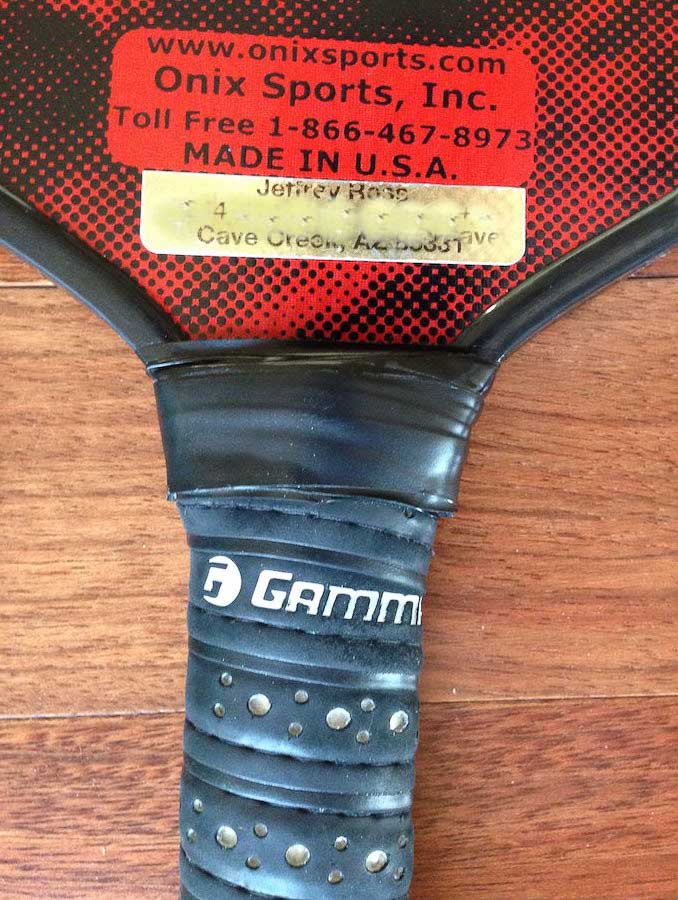
NOTE – Address is intentionally blurred and is legible on the paddle.
Taking all the above precautions now allows me to easily identify my paddle and if, for some reason, it gets misplaced, the chances of it finding its way back to me are greatly improved.
NOTE – There are rules and regulations issued by the USAPA regarding what is and what is not allowed on paddle surfaces. For your information, I am printing them below so that you can make sure any modifications you make will comply with official USAPA rules and regulations.
From the INTERNATIONAL FEDERATION OF PICKLEBALL (IFP) OFFICIAL TOURNAMENT RULEBOOK
2.E.2. Surface. The paddle hitting surface shall not contain holes, indentations, rough texturing, tape, or any objects or features that allow a player to impart additional spin on the ball. Paddle roughness is determined using a Starrett SR 100 or its replacement testers such as the Starrett SR160 Surface Roughness Tester. The allowable limits for roughness shall be no greater than 30 micrometers (μm) on the Rz reading (average maximum height, peak to valley), and no greater than 40 micrometers on the Rt reading (maximum height, peak to valley). All readings will be taken in 4 different directions. The paddle hitting surface shall not be adversely reflective, such that it has the potential to obscure the vision of opposing player(s). (revised Apr. 15, 2016)
2.E.5. Alterations. The only alterations that can be made to a commercial paddle are changes to the grip, adding an edge guard, and adding name decals and/or other identification markings on the paddle face. These decals/markings can extend no farther than 1″ (25.4 mm) above the top of the handle nor more than 1/2″ (12.7 mm) from the outer edge of a paddle, or paddle edge guard if in place. Altered paddles must meet all specifications. Homemade paddles are not permitted. (Effective January 1, 2014)
2.E.6. Prohibited Surface Features and Mechanical Features.
2.E.6.a. Anti-skid paint or any paint textured with sand, rubber particles, or any material that causes additional spin.
Section 2: Court and Equipment 2.E.6.b. Rubber and synthetic
rubber.
2.E.6.c. Sandpaper.
2.E.6.d. Moving parts that can increase head momentum.
2.E.6.e. Springs or spring-like material.
2.E.6.f. Flexible membranes or any compressible material that creates a trampoline effect.
2.E.6.g. Electrical, electronic, or mechanical assistance of any sort.
If you have ways to distinguish your paddle that are not mentioned above, leave them in the comments section.